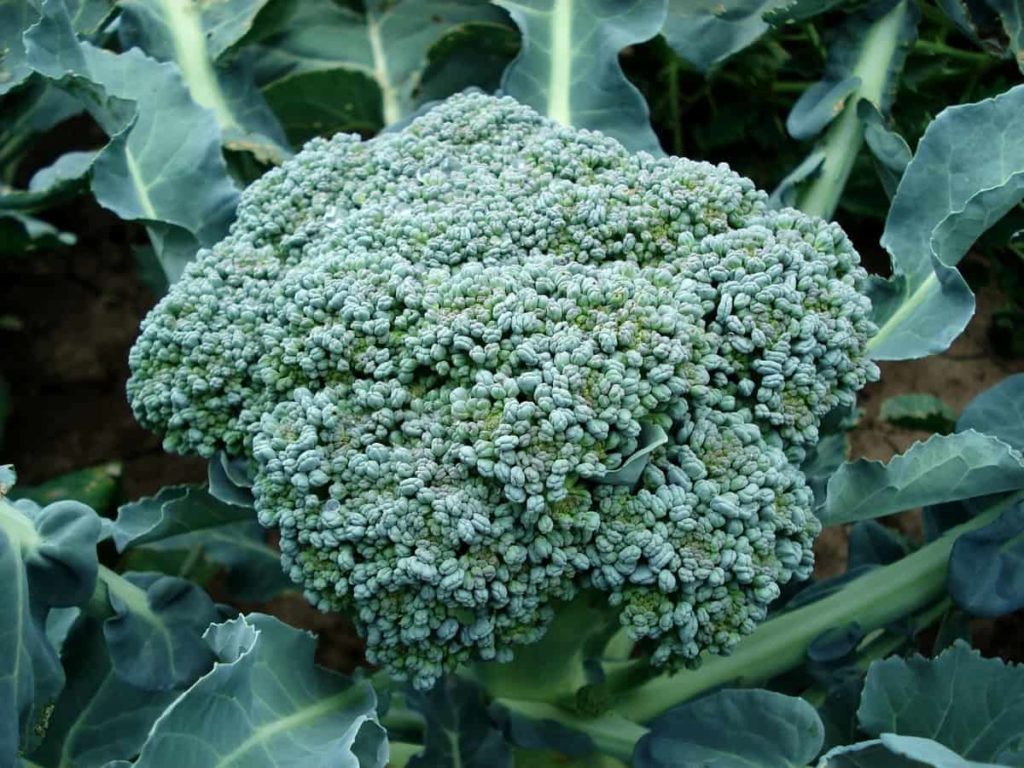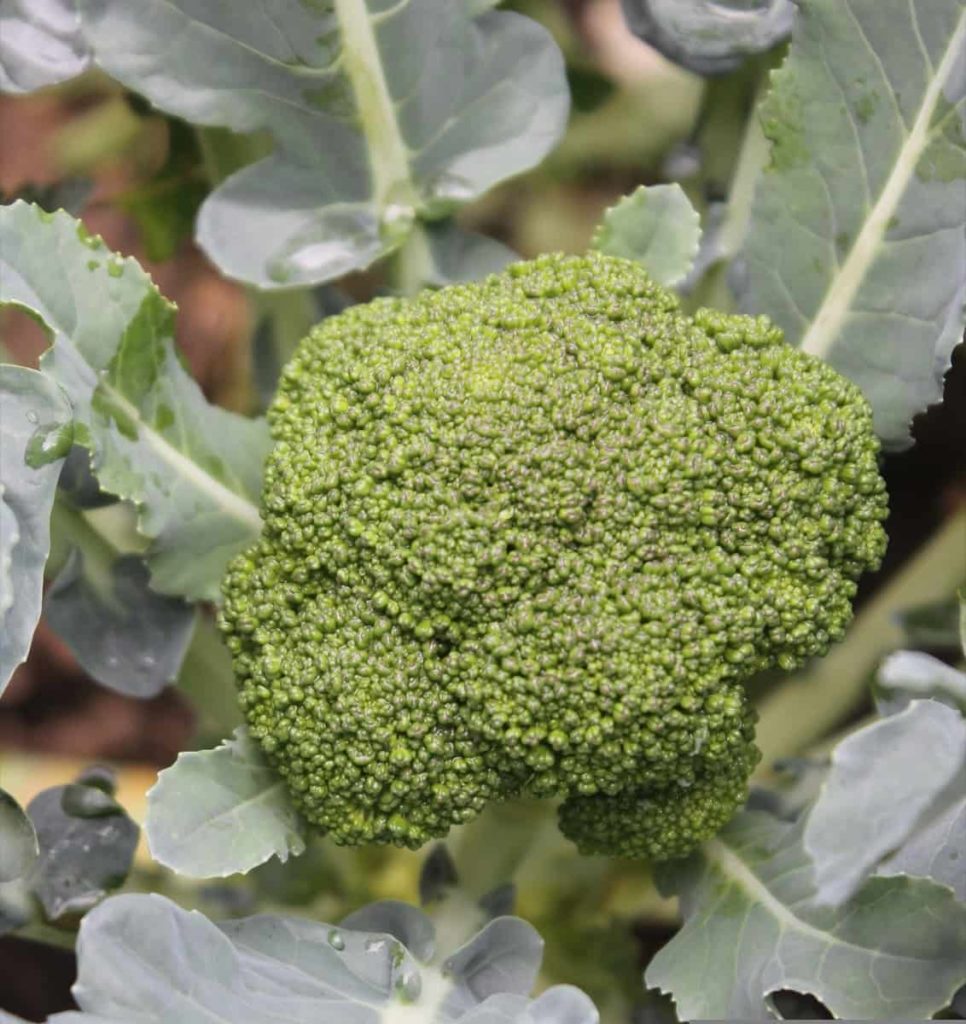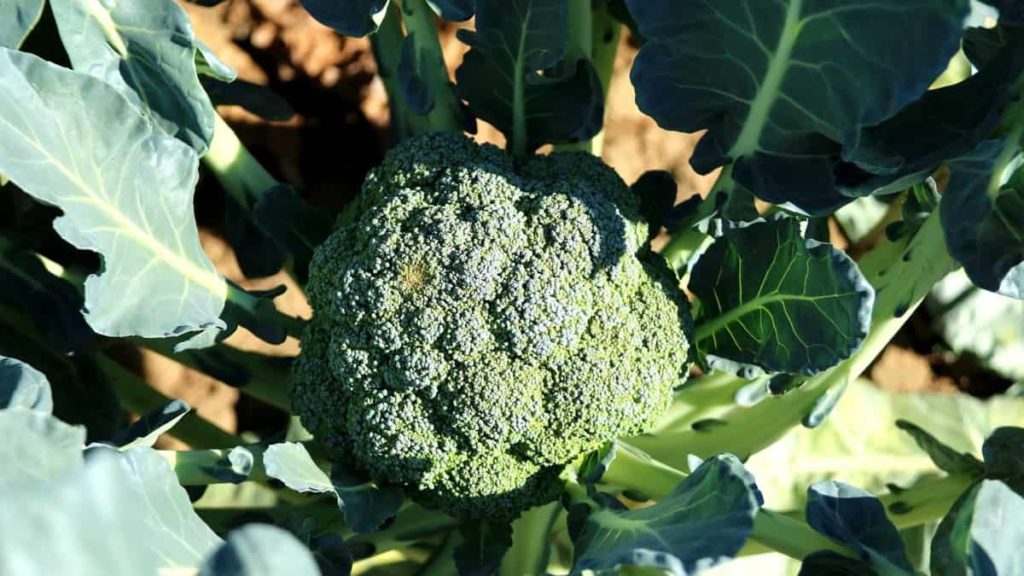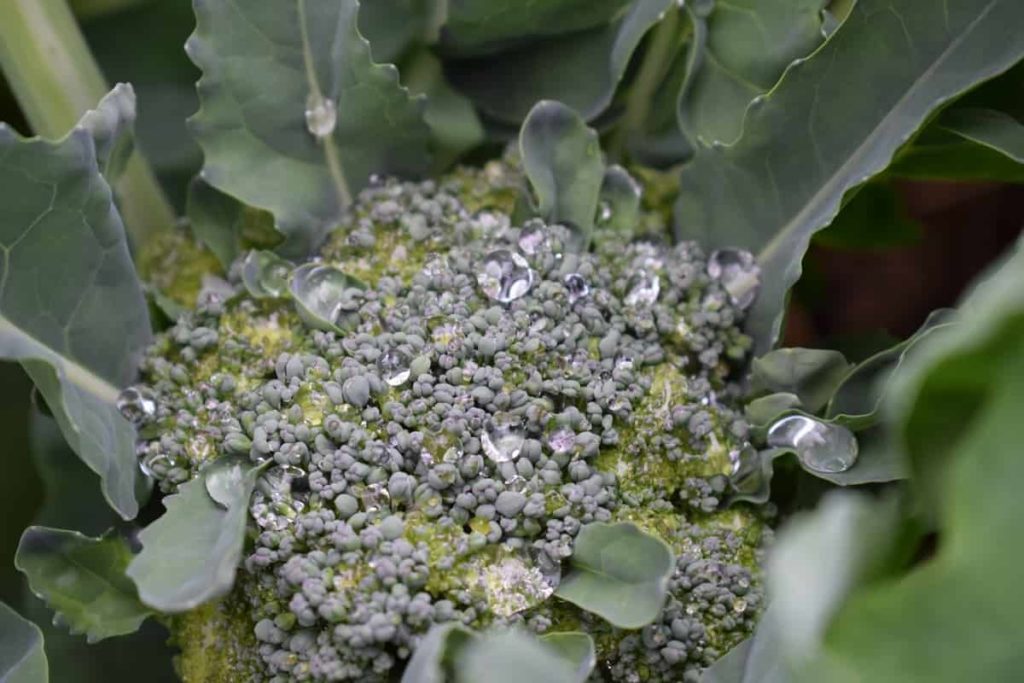Broccoli is a delicious, nutritious vegetable that is perfect for various meals. Broccoli is also quite interesting because it requires less sunlight than many vegetables. This is a great option when you have a location that doesn’t usually have enough light and indoor growing. Growing Broccoli indoors is very easy.

It’s also perfect for low-light conditions and can help you maximize space where other plants may have difficulty growing. You can easily grow Broccoli in a garden, terrace, or pot. Broccoli is a nutrient-rich green vegetable that produces large, dark green floral heads and light green stems. It closely resembles Cauliflower, a member of the Brassica family but comes from a different cultivar group.
How to grow Broccoli in pots in India
Best time to grow Broccoli in India
You should plant Broccoli in cooler months for the best results. The growth of the Broccoli plant will be affected by the high temperatures of the summer months. From September to November, you can easily grow Broccoli in India. If you have a polyhouse or a greenhouse, you can grow it anytime. Depending on your type, climate, and soil fertility, Broccoli matures between 75 and 100 days. You can start Broccoli seeds indoors mid-summer and plant them at their final location after the plant is about six inches tall.
In case you missed it: 18 Common Broccoli Plant Problems: How to Fix Them, Solutions, and Treatment

- For the spring harvest – Plant seeds 4 to 6 weeks before your area’s last average frost date. You should sow seeds in the fall for best results, as summer temperatures inhibit Broccoli growth.
- For a fall or winter harvest – If you’re looking forward to a fall or winter harvest, transplant seedlings into the garden in the summer. For areas with mild winter, you can plant it in the fall.
Soil requirement for growing Broccoli in pots
Any garden soil can be used for Broccoli production, but it needs to be fertile first. The garden soil pH must be between 6.4 and 7.6. You must maintain moisture in the soil before Broccoli plants sow and grow. Soil moisture should be between 30 and 45 percent moist. More than 50% of the soil gets wet or dry; soil below 25% moisture is not good for plants. You should always use a fresh potting mix when you plant your Broccoli. Old potting soil may contain pests or diseases.
A good potting mix contains much organic matter, such as compost, to feed plants when it grows. A small quantity of fertilizer will not give the plant the necessary nutrients to make a good head of Broccoli. Excess fertilizer will burn the plant and kill it. You should follow the instructions on the fertilizer bag. To grow Broccoli at home in India, you first need to prepare a seedling mix. The seedling mixture for Broccoli should be nutritious and retain moisture for a good time. Mix 50% coco peat, 30% sand, and 20% vermicompost; mix them well before using them.
Best climate to grow Broccoli in pots
Broccoli is a relatively cool-weather plant looking for temperatures in the 13°C to 24°C range. Indoors it’s usually not a problem, but if you’re planting outdoors, look for planting in early spring or fall. Due to its temperature requirements, many gardeners plant Broccoli outside their normal schedule of other vegetables. One problem that will arise in hot temperatures is that Broccoli will start bolting. Bolting is just flowering, and it will ruin any future harvest.
In case you missed it: Best Fertilizer for Broccoli: Homemade, Liquid, Organic, Compost Manure, NPK, and Schedule

Bolting in Broccoli is usually brought about by very hot temperatures. In particular, if the soil becomes too hot. You can prevent bolting by ensuring your plant isn’t too hot. Moving to indirect light can help; make sure it still has enough hours of light per day to grow. Choose a place where plants get 5 to 6 hours of full sunlight daily. Ensure they are not exposed to the harsh Indian afternoon sun for long.
The best type of container for growing Broccoli
Plastic pots, terracotta, and fabric grow bags also used Broccoli containers. When choosing a pot to plant Broccoli, the type of material it’s made of doesn’t matter. Broccoli grown in poor drainage pots is the number one killer. If your Broccoli sits in standing water for too long, its roots will rot, and the plants will likely wilt. For growing Broccoli, 2 to 4 holes must be at the bottom if you use a plastic container.
Terracotta pots and fabric grow bags are great container options for growing Broccoli because they are naturally porous. Most terracotta pots also have a hole at the bottom for additional drainage. If your Broccoli grows in grow bags, see how well they drain before planting. If the water doesn’t leak through the bag quickly, you may add a hole or two below to keep the roots of your Broccoli plant healthy and happy. For growing Broccoli, you should choose a sufficient 8 to 10 inches pot.
Propagation of Broccoli in pots
Before sowing seeds directly from the packet, treating or placing them in a slightly dry place is best. You can easily propagate Broccoli from the seeds. Before planting, modify 2 to 4 inches of the upper soil of the pot by mixing aged cow dung manure or compost. To sow seeds, dig a few holes in a large pot of soil mixture, spread the seeds evenly, and then cover them with the same soil mixture. Remember, you don’t need the seeds to overlap each other.
You can also start the Broccoli seeds in a seed tray and transplant them into a garden bed after 4 to 5 true leaves appear in 25 to 30 days. Now, spray water and let the sprouts appear in the next 4 to 7 days. Again, lightly shower it with a sprayer to make the soil moist. Keep this container where it receives light morning sunlight for 1 to 2 hours, and then you can place it under partial shade for the rest of the day and gets only indirect sunlight. You should maintain moisture in the seedling mix by lightly watering it occasionally.
In case you missed it: Broccoli Questions and Answers – Planting FAQs

Transplanting Broccoli seedlings in pots
When the Broccoli seedlings are 5 to 6 inches tall, they are ready to grow in separate pots for better and faster growth. You carefully take out the sapling without hurting its root system. And place it inside the 10 to 12-inch container. Repeat the same process for each sapling.
Then water it gently to moisten the soil and keep it in bright indirect sunlight for 3 to 4 days until it deals with the shock of transplantation. After this, move the container to where it receives 5 to 6 hours of direct sunlight. You should water it whenever the upper layer of the soil feels dry, just enough to keep the soil moist.
Water requirement for growing Broccoli in pots
You can maintain a healthy plant by ensuring the soil never dries completely. Before you water the plant again, let the topsoil dry a bit. You should watch the drainage holes of your chosen container, and when these begin to leak, stop watering.
Fertilizer requirement for growing Broccoli in pots
During planting, use slow-release and all-purpose fertilizers. Side-dress Broccoli with aged manure when planting and once again in mid-season when it is half-grown. To provide a healthy yield, Broccoli requires a good amount of fertilizer. After 35 to 40 days of germination, provide fertilizer at intervals of 7 to 10 days until harvesting.
If you’re thinking of garden soil to grow Broccoli, you should know that garden soil isn’t fertile enough to grow most plants. The soil of the garden becomes fertile when you add compost to it. You can use vermicompost to make your soil fertile.
In case you missed it: Growing Hydroponic Broccoli – A Complete Guide

Pests and diseases of Broccoli in pots
Diseases
Broccoli is a tasty, cool-season crop, easy to grow under the right conditions. Healthy plants can withstand mild infections of insects and certain diseases. You should choose a location with plenty of sunlight, rich, well-drained soil, and good air circulation to help keep plants dry and prevent most Broccoli growing problems. Bacterial and fungal diseases are also among the growing problems of Broccoli. Several diseases of leaf spots affect Broccoli plants.
Rotate crops in the same area more than once every three years to avoid growing cole family members. You should place the plants properly to allow good air circulation and apply irrigation directly to the soil to keep the plants as dry as possible. The powdery mildew leaves Broccoli plants as if they were dusted with flour. The first parts of the affected plant are Broccoli leaves. If not controlled quickly, fungus spores can spread to the stems and head. Plenty of sunlight and good air circulation control the problem.
Pests
Aphids release a sticky substance while eating Broccoli leaves that attract sooty mold. It will cover the plant, cut off photosynthesis and keep the plant hungry. When the larva hatches, ladybugs will kill all the aphids on your plant. Cabbage loopers are caterpillars up to one and a half inches long. They chew large holes in the leaves of the Broccoli plant. Cabbage loopers can be picked up and dropped into soapy water to die. They can also be sprayed with Bacillus thuringiensis, which is a bacterial infection that only kills caterpillars, not other insects.
In case you missed it: Broccoli Gardening Techniques, Ideas and Tips

When and how to harvest Broccoli
It cannot be easy to decide when to start harvesting green vegetables for first-time growers. The duration of harvesting also depends on the different types of Broccolis you are growing; they are usually produced when the diameter of Broccoli reaches about 4 to 7 inches. The best harvest time is early morning when the Broccoli head is strong and tight. Cut off the Broccoli heads from the plant, taking about 6 inches. Broccoli will be ready for harvesting in 60 to 80 days after transplantation into the desired container/garden.
Conclusion
Growing fruits and vegetables is not just an interesting hobby. It’s an amazing way to keep fresh produce free of harmful chemical residues in large-scale growing crops. If the right conditions are maintained, it is possible to harvest continuously throughout the year. Broccoli loves the sun and needs it and prefers full sun exposure.
Growing Broccoli pots is much easier than having the right container and soil. You’ll probably notice that Broccoli grown in containers is much thirstier than Broccoli grown in a garden bed. You should adjust your schedule to water more frequently.
- How to Grow Hibiscus from Flower
- Plantation Ideas for Home Decoration: A Beginners Guide
- Flower Garden Designs and Layouts for Beginners
- Planting and Spacing Techniques in Papaya: A Beginner’s Guide
- Growing Gold: Essential Techniques for Planting Pineapples
- How to Make Kalanchoe Plant Bushy: Home Remedies and Solutions
- 11 Reasons Why Your Gardenia is Not Blooming: Home Remedies and Solutions
- Eco Elegance: The Guide to Designing a Drought-Tolerant Landscape
- Gardening on a Slope: Strategies for Hillside Landscaping
- Nourish and Flourish: Top Organic Mulches for Thriving House Plants
- Everything You Want to Know about Indian Mogra Flower: Discover Uses and Growing
- Green Thumb Success: Expert Tips for Cultivating Greenhouse Pumpkins All Year Round
- Maximize Growth & Flavor: The Ultimate Guide to Companion Planting in Herb Gardens
- How to Control Rhododendron Problems Naturally: Home Remedies and Organic Ways to Fix Them
- Natural Magic: The Remarkable Benefits of Cinnamon for Plants
- Best Steps to Revive Dying Tulip with Natural and Organic Treatment
- 10 Reasons Why Your Angel Trumpet is Not Blooming: Remedies and Treatment
- How to Fix Periwinkle Leaf and Flower-Related Problems: Natural Remedies and Solutions
- How to Fix Zinnias Leaf and Flower Problems: Discover Natural and Home Remedies
- Organic Steps to Induce Lemon Tree Flowers: A Comprehensive Guide
- Bloom Booster: Crafting the Perfect Homemade Bougainvillea Fertilizer
- Optimizing Growth: A Guide to Applying NPK Fertilizer for Potted Plants
- 10 Best Homemade Fertilizers for Rubber Plant: DIY Recipes and Application Method
- How to Boost Female Pumpkin Flowers: Effective Steps for More Flowers and High Yields
- Transform Your Indoor Garden: Top Benefits of Pink Salt for Houseplants
- 10 Best Homemade Fertilizers for Peacock Plants (Calathea): Easy DIY Guide
- Unlock Blooms: 9 Reasons Why Your Potted Chrysanthemum is Not Blooming
- 8 Reasons Why Your Potted Hibiscus is Not Blooming: Fix it with Simple Solutions
- Unlock Blooms: 9 Key Reasons Your Potted Frangipani Won’t Flower
- 10 Reasons Why Is My Ice Plant Not Blooming: Remedies and Treatment
- 10 Reasons Why My Potted Hydrangea Not Blooming: Treatment and Remedies
- 10 Reasons Why is My Wisteria Not Blooming: Remedies and Treatment
- 10 Reasons Why is My Goldfish Plant Not Blooming: Remedies and Treatment
- Maximize Your Space: Ultimate Guide to Balcony Gardening with Grow Bags
- 10 Reasons Why Your Iris is Not Blooming: Remedies and Treatment
- 10 Reasons Why Your Anthurium Plant is Not Blooming: Treatment and Remedies